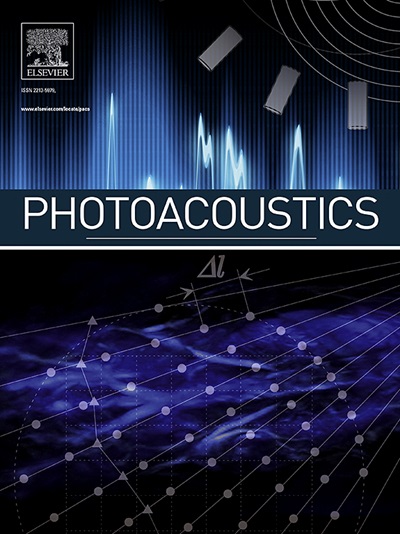Effect of gas turbulence in quartz-enhanced photoacoustic spectroscopy: A comprehensive flow field analysis
IF 7.1
1区 医学
Q1 ENGINEERING, BIOMEDICAL
引用次数: 0
Abstract
Here we present a computational and experimental fluid dynamics study for the characterization of the flow field within the gas chamber of a Quartz-Enhanced Photoacoustic Spectroscopy (QEPAS) sensor, at different flow rates at the inlet of the chamber. The transition from laminar to turbulent regime is ruled both by the inlet flow conditions and dimension of the gas chamber. The study shows how the distribution of the flow field in the chamber can influence the QEPAS sensor sensitivity, at different operating pressures. When turbulences and eddies are generated within the gas chamber, the efficiency of photoacoustic generation is significantly altered.
石英增强光声光谱中的气体湍流效应:流场综合分析
在此,我们介绍了一项计算和实验流体动力学研究,用于描述石英增强光声光谱(QEPAS)传感器气室内的流场特征,气室入口处的流速各不相同。从层流到湍流的转变受入口流动条件和气室尺寸的影响。研究表明,在不同的工作压力下,气室内的流场分布如何影响 QEPAS 传感器的灵敏度。当气室中产生湍流和涡流时,光声发生的效率会发生显著变化。
本文章由计算机程序翻译,如有差异,请以英文原文为准。
求助全文
约1分钟内获得全文
求助全文
来源期刊

Photoacoustics
Physics and Astronomy-Atomic and Molecular Physics, and Optics
CiteScore
11.40
自引率
16.50%
发文量
96
审稿时长
53 days
期刊介绍:
The open access Photoacoustics journal (PACS) aims to publish original research and review contributions in the field of photoacoustics-optoacoustics-thermoacoustics. This field utilizes acoustical and ultrasonic phenomena excited by electromagnetic radiation for the detection, visualization, and characterization of various materials and biological tissues, including living organisms.
Recent advancements in laser technologies, ultrasound detection approaches, inverse theory, and fast reconstruction algorithms have greatly supported the rapid progress in this field. The unique contrast provided by molecular absorption in photoacoustic-optoacoustic-thermoacoustic methods has allowed for addressing unmet biological and medical needs such as pre-clinical research, clinical imaging of vasculature, tissue and disease physiology, drug efficacy, surgery guidance, and therapy monitoring.
Applications of this field encompass a wide range of medical imaging and sensing applications, including cancer, vascular diseases, brain neurophysiology, ophthalmology, and diabetes. Moreover, photoacoustics-optoacoustics-thermoacoustics is a multidisciplinary field, with contributions from chemistry and nanotechnology, where novel materials such as biodegradable nanoparticles, organic dyes, targeted agents, theranostic probes, and genetically expressed markers are being actively developed.
These advanced materials have significantly improved the signal-to-noise ratio and tissue contrast in photoacoustic methods.
 求助内容:
求助内容: 应助结果提醒方式:
应助结果提醒方式:


